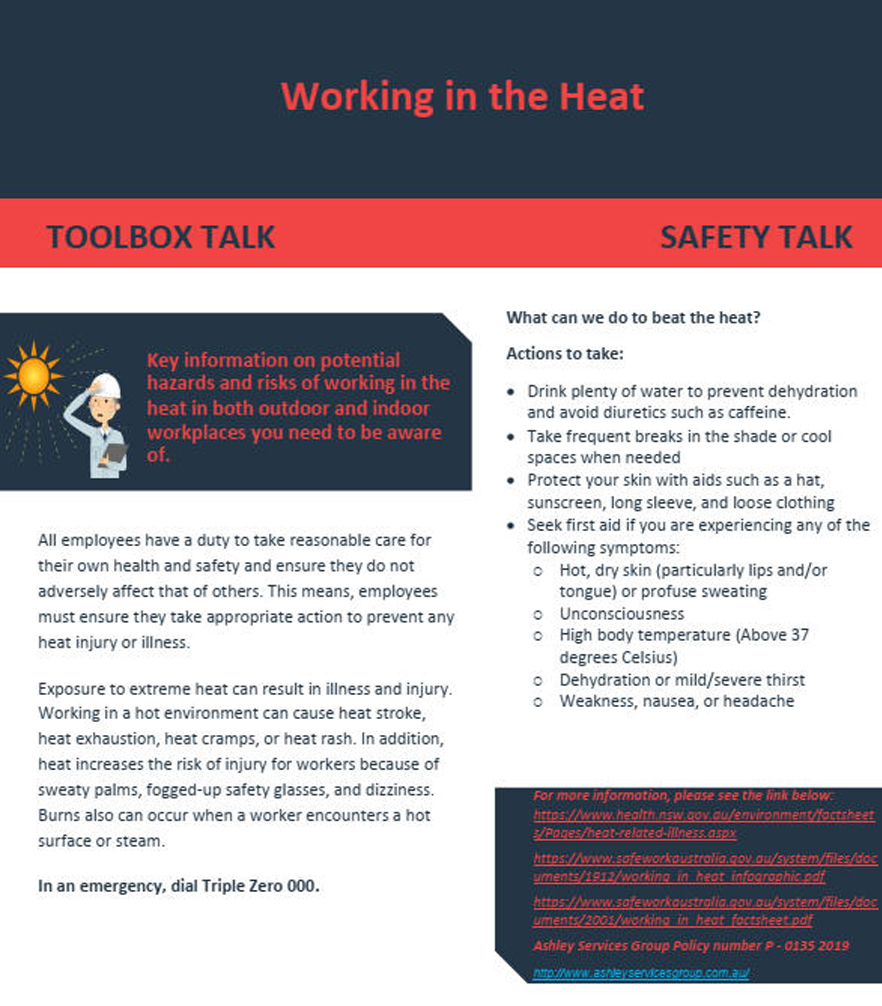News
We are prominent supplier in recruitment and labour hire services
It is that time of year where we would rather be at the lake or down at the beach, the weather is glorious. But the good weather doesn’t stop because we are at work, so we wanted to provide some information to all of you, our employees, about the effects of excessive heat and the warning signs to look out for so as to ensure that you are aware of the hazard during these and future occupation works.
Sweating is the body’s main means of trying to cool itself and this can quickly lead to dehydration for people working in hot conditions. Your body needs a certain amount of fluid each day to maintain the various body systems within. The fluid you drink replaces body fluids lost through sweat and urine. You become dehydrated when you are not drinking enough fluid to replace lost body fluid. On average, people need about eight glasses of water per day to replace lost fluid. In a hot environment, you need to drink more than eight glasses to replace the larger amount of fluid that you will lose.
Heat illness occurs when the body cannot sufficiently cool itself. Factors that contribute to this include:
Signs to look out for in yourself and others

What you can do to mitigate the heat
Remember to watch your workmates, this isn’t just those that form part of our labour hire workforce, but anyone in your work area or site, take note of their behaviour and movements, do not be afraid to check on someone and ask if they are ok.
For more information, please see the link below:
https://www.health.nsw.gov.au/environment/factsheets/Pages/heat-related-illness.aspx
https://www.safeworkaustralia.gov.au/system/files/documents/1912/working_in_heat_infographic.pdf
https://www.safeworkaustralia.gov.au/system/files/documents/2001/working_in_heat_factsheet.pdf
Ashley Services Group Policy number P – 0135 2019
http://www.ashleyservicesgroup.com.au/